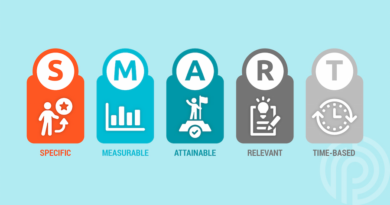How to Improve the IT Efficiency Through Automated UC Provisioning
The information technology departments need to keep track of all the changes made in the IT infrastructure. Many organizations have adopted UC provisioning tools to simplify the task of tracking. UC Provisioning helps to automate the deployment of Unified Communications platforms. UC provides ease and control with a centralized provisioning solution. This gives IT complete visibility into all components in your environment. This article provides an overview of how Automated UC Provisioning can improve efficiency in your organization.
UC Software Provisioning Process
The process of UC provisioning can be manual or automated. If you choose manual provisioning, you will need more time to set up your UC system than automated provisioning. This is because you will have to perform many tasks manually. But, automated provisioning requires more upfront investment for it to work well.
Manual vs. Automated
While we tend to think about automation in physical processes, there are many ways to automate IT processes. The most common way is using scripts or software tools that automate manual tasks and make them repeatable. This allows us to reduce error rates and increase efficiency while reducing costs associated with human labor. It’s automated provisioning because it will enable you to automate parts of your existing manual process. This way, tasks complete faster than before.
Automated UC Provisioning
It’s the process by which Unified Communications services are set up and configured without human intervention.
Automated UC Provisioning helps you streamline your communications infrastructure. It allows you to automate the provisioning process. This means that it will take less time for your team to get started with new services. The ultimate goal of automated UC provisioning is to enhance the customer experience. This is by delivering the appropriate UC service on time and ensuring that it performs as expected.
Process of Automated Provisioning Tools
User provisioning software is like other types of automated IT processes. It reduces time spent on repetitive tasks while improving the quality and consistency of the service delivered to users. Automated UC provisioning works by using scripts that run on a server to configure devices connected with the UC system. IT professionals can write these scripts, or buy from third-party vendors.
UC provisioning involves the following steps:
- Identifying users who are going to use UC services.
- Preparing user requirements and defining which UC service they will use.
- Installing and configuring required hardware and software components on user devices.
- Configuring user accounts with appropriate settings for each UC service they need access to.
Manual Unified Communication Provisioning Challenges
The IT world has been in a state of constant transformation over the past few years. The rise of cloud computing, mobility, and social media has presented new challenges for IT departments worldwide.
One of the biggest challenges that IT faces today is meeting the growing demand for more efficient and secure communications. Unified communications (UC) solutions have become an essential tool for businesses. They seek to reduce costs, increase productivity and improve collaboration. While UC technology has advanced significantly over the past few years, there are still several key challenges. Some of the difficulties that IT organizations face when deploying these solutions are:
- The complexity of managing many vendors with different interfaces
- The lack of centralized management tools
- Difficulty in provisioning and tracking service requests
- Not knowing which users are connected to each vendor’s system
Benefits of Automated UC Provisioning
Source: Pixabay
Unified communications (UC) is the next step in enterprise communications. It combines voice and data applications into one easy-to-use solution. Unified communications solutions offer several benefits to your organization, including:
- Increased collaboration. Unified communications solutions allow employees to share information through real-time collaboration tools. This helps increase the speed at which employees can get their work done. This maintains high productivity and quality levels.
- Improved productivity. Unified communications solutions can improve employee productivity. This is by allowing employees to collaborate fast regardless of location or device. Unified communications enable employees to make calls from their desktop, mobile device, or landline phones. Employees can also use video conferencing to conduct meetings without traveling to other locations.
- Speedier deployment. Once you have set up your first Unified Communications system, all later deployments will be faster. This is because all the configuration information for each component is stored in one central location. When you add another phone or desktop computer to your network, all settings will be exactly where they need to be. There will be no manual steps required on your part.
- Reduced time to market. By automating, you can reduce the time it takes to deploy new employees with their desktops and phones. This can help you cut costs by avoiding unnecessary staffing expenses and getting your new employees up and running more quickly.
- Improved efficiency. When fewer people are involved in the approval process, it becomes easier for them to approve requests faster. This results in increased efficiency within your organization.
- Reduce costs related to manual processes. A manual process requires resources from different departments, including IT and HR. This leads to increased costs for the organization. You can reduce these costs by automating the process with an automated UC provisioning solution. This will make it easier for employees to access applications without waiting for approval from many people.
- Improve service quality. The quality of service improves because automated UC provisioning helps you plan and prepare for any changes in demand.
- Provide consistency. An automated solution makes consistency easier to maintain across different teams and locations. It also helps with compliance because the same configuration applies to all new systems regardless of location or type.
- Improved customer experience. Faster time to market and lower total cost of ownership contribute to a better customer experience. It reduces the time it takes for customers to receive their new service.
Conclusion
One of the main concerns about Unified Communications is getting everything up and running fast. Too many tasks and configuration parameters make the whole process slow and lengthy. That’s why an automated provisioning platform may be beneficial. It reduces a set of standard steps manually by administrators into only a few clicks on one single interface. This makes the whole deployment process fast and easy.




